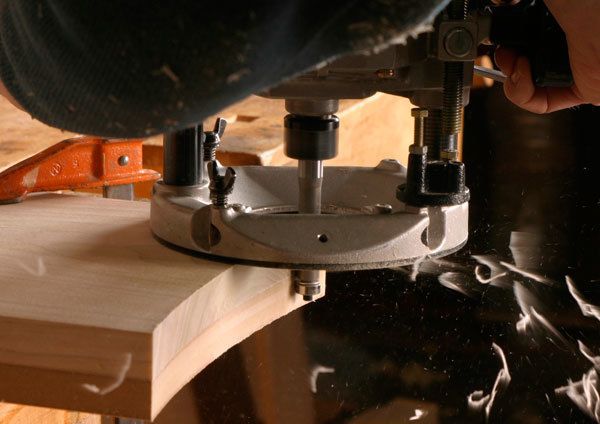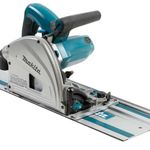Sorting Out Straight Router Bits
Two flutes or one, spiral or straight, bearing guided? Discover the best bits for any routing task.
Despite the simplicity of the straight router bit, this versatile cutter can do a staggering array of work in the shop. With the help of a variety of jigs, I use straight bits to rout dadoes and rabbets, cut grooves for inlays, rout mortises (both for hinges and for tenons), flatten or shape panels, rout specially shaped holes and cleanly cut round holes, and shape and duplicate parts with a template.
The straight router bits available are as diverse as the jobs they can tackle. They come in an array of sizes, lengths, and flute patterns. Your choice will be dictated by the task at hand, so it’s best to learn how each bit works.
Start with the basics
The most common version of the straight router bit is a straight-fluted bit. This comes with either one cutting edge (single flute) or two parallel cutting edges (two flutes) that will do an acceptable job on most cutting tasks.
Straight-flute bits with one cutting edge are the only bits that come in very small sizes for routing inlays or other small jobs (there isn’t much room on a 1/16 bit for two flutes). In larger sizes, this design cuts faster but with a slightly rougher quality than with other style bits.
Those with two cutting edges are ideal for cutting rabbets or dadoes on the edge of a board, or for through-cuts in the center of a board, where the bit is entering and exiting the workpiece as it cuts. They are also a good choice for shallow mortises, such as hinge mortises, where you increase the depth of cut slightly with each pass.
However, straight-flute bits don’t plunge straight down into wood very well because the cutting edges are on the side, not the bottom.
Two bits for plunge cuts
If you need to plunge straight down into a workpiece, such as when cutting mortises or stopped dadoes, you have two choices, either a straight-flute bit with an added point on the bottom, or a bit with cutting edges on the end that extend to the center of the bit. The former is a specialty item, often with an angled tip like a drill bit. The latter is usually found on spiral-flute bits.
In addition to being ideal for plunge cuts, spiral-flute bits (also known as shearing bits) leave high-quality surfaces. They are available with the cutting edge on the upcut and downcut. Spiral upcut bits tend to tear out a bit more on the top surface, since they are lifting the wood, but usually leave the bottom surface in excellent shape. The reverse is true for spiral downcut bits.
A third style, known as a compression bit, is designed to cut the top and bottom edges cleanly–a plus for routing the edges of difficult plywood, for example.
Spiral upcut bits often are used for mortising, because they clear the wood chips better than straight-flute bits. There is a tendency to tear out at the ends of the cut, but this is not usually a major issue. Because of the complex machining processes used to make spiral-flute bits, they cost more than straight-flute bits.
Flush-trimming bits for template cuts
Flush-trimming bits, or bearing guided bits, are incredibly useful for shaping multiple identical parts with a template. The bearing rides against a template and the cutter trims the workpiece to match. Flush-trimming bits are available with the bearing ‘over’ (between the cutting edge and the shank of the bit) or ‘under’ (at the end of the bit shown in the photo right).
Both types of flush-trimming bits work equally well with a template; your choice depends on whether the template is above or below the workpiece. Many woodworkers have both types of flush-trimming bits so they can change routing direction when cutting with a template to accommodate changes in grain direction.
A new style of flush trimming bit has recently entered the market. These bits have a bearing at the end of the bit and an identical bearing between the shank and the cutting surface. This allows you to use the same bit whether the template is positioned above or below the workpiece.
Jeff Miller is a furniture maker and teacher in Chicago, Illinois.
Learn even more about Router Bits from FineWoodworking.com:
- Spiral vs straight router bits
- Best bits for Pattern Routing
- Gary Rogowski shows you the types of bits everyone needs
Fine Woodworking Recommended Products

Makita SP6000J1 Track Saw

Blackwing Pencils

Tite-Mark Marking Gauge























Comments
Personally, I always go for straight cutters, as I have yet to see anyone demonstrate how to hone a spiral bit (maybe it's possible, I just haven't seen it).
I do like the double bearing cutters though, they are very useful for template work.
Log in or create an account to post a comment.
Sign up Log in